Traditional Philippine Musical Instruments – The Filipino’s Rhythm
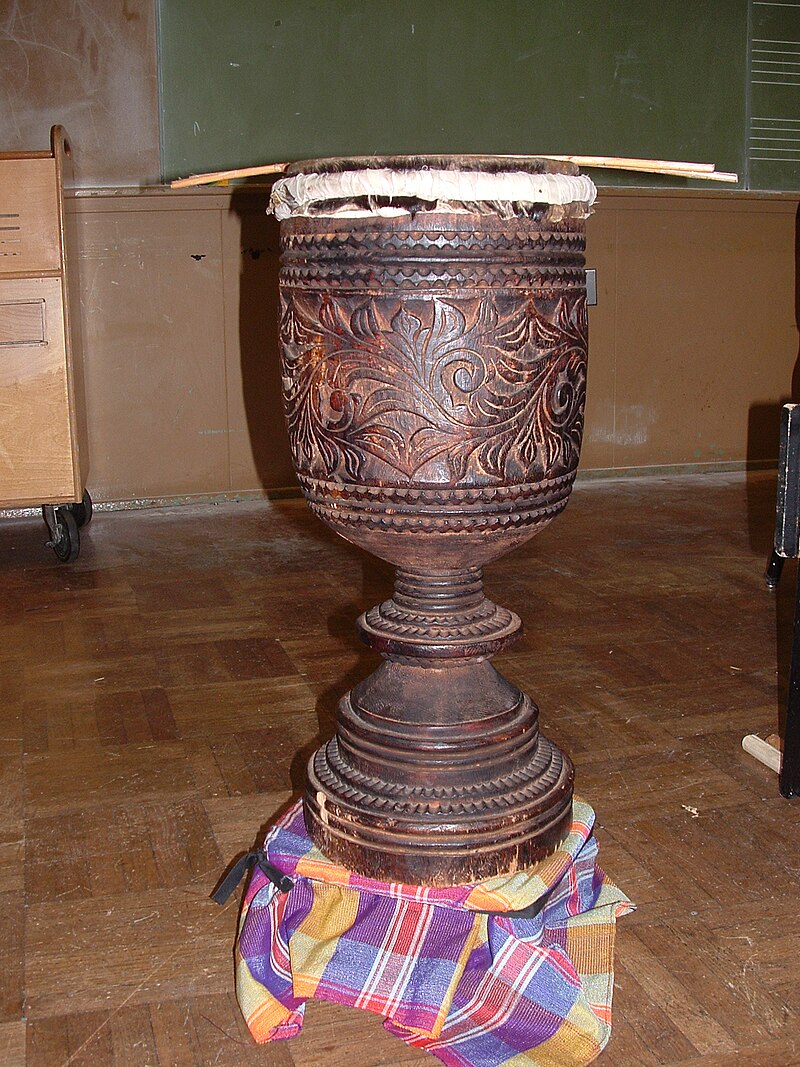
The Philippines is known for its vibrant culture, a melting pot of different influences, and its rich musical heritage that spans centuries. Traditional Filipino music is not only an essential part of Filipino identity but also a reflection of the country’s diverse history, from indigenous groups to colonial influences. At the heart of this tradition lies a fascinating array of musical instruments, many of which are crafted and played in unique ways that carry deep cultural significance.
In this blog, we will explore some of the most important traditional Philippine musical instruments that have resonated through the centuries, continuing to tell stories, evoke emotions, and celebrate the beauty of Filipino culture.
Kulintang
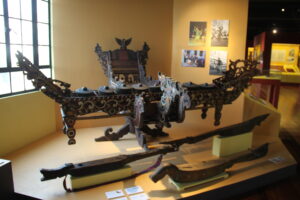
Bangsamoro and Lumad Cultures Gallery, Museum of the Filipino People, Rizal Park, Manila, Philippines. Complete indexed photo collection at WorldHistoryPics.com. © Creative Commons | Author: Gary Todd
Kulintang is an ensemble of gong-chimes, played in a particular sequence to create complex and beautiful melodies. The ensemble generally consists of several gongs of varying sizes, which are arranged in a row or circular formation. These gongs are suspended and struck with mallets, producing a sound that resonates with deep, rich tones. Read more.
Kudyapi

Lute (kutyapi), Mindanao, wood, Honolulu Museum of Art © Creative Commons | Author: Hiart
The Kutiyapi, also known as the “Kutyapi” or “kudyapi”, is a type of lute that originates from the indigenous communities in Mindanao, particularly among the Maranao, Maguindanao, and other Muslim groups. The name Kutiyapi is derived from the words “kuti” (a term for a long boat) and “api” (referring to a stringed instrument), reflecting its distinctive boat-shaped body. Read more.
Luntang

The Luntang is a traditional percussion instrument that originates from the Philippines, specifically from the Maguindanaon people. It is primarily used in indigenous Filipino music, particularly in folk and ceremonial contexts. The instrument itself consists of a set of wooden or metal bars that are struck with mallets to produce resonant tones. Read more.
Kubing

flickrista Jun Lisondra (left) and college instructor Vee Domingo (right) played the kubing for the opening salvo © Creative Commons | Author: Shubert Ciencia from Nueva Ecija, Philippines
Kubing is a traditional Filipino musical instrument that belongs to the family of lamellophones, which are instruments that produce sound when a vibrating lamella (a flat, flexible material) is plucked. It’s often referred to as a “jaw harp” in English, though the Filipino term “Kubing” or “Kubi” is more accurate, as it comes from the Tagalog words kubo (meaning hut) or kubing (meaning to vibrate). Read more.
Gabbang
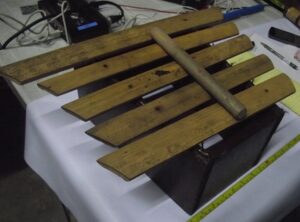
The Gabbang (bamboo xylophone) from Tausug, Palawan, Philippines. The Gabbang in the picture is a property of UP Kontra-Gapi.
© Creative Commons | Author: Jfmrili
The Gabbang is a type of xylophone, which consists of wooden slats of varying lengths arranged on a frame. Played by striking the slats with mallets, the Gabbang produces bright, melodic tones that are deeply associated with the indigenous music of the T’boli people, an indigenous group from South Cotabato in Mindanao, and other cultural communities in the region. Read more.
Dabakan
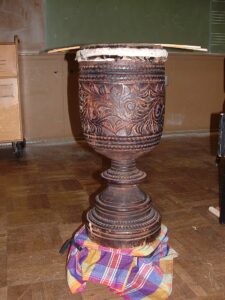
Dabakan Musical Instrument © Creative Commons | Author: Philip Dominguez Mercurio (PhilipDM)
The Dabakan or Libbit in Ifugao is a type of single-headed drum traditionally played in the Mindanao region of the Philippines. It is a member of the membranophone family, meaning it produces sound primarily by vibrating a membrane or skin. The drum is typically used in the Kulintang ensemble, which is a traditional Filipino instrumental group made up of gongs, drums, and other percussion instruments. Read more.
Diwas
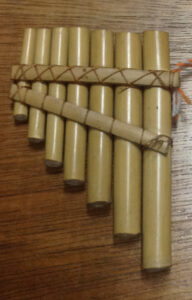
A diwas from the UP Center of Ethnomusicology © Creative Commons | Author: Axilepesa
The Diwas is a native wind instrument made entirely from bamboo, a material that holds both practical and cultural importance in the Philippines. It is typically used in traditional rituals, festivals, and community gatherings, particularly in rural areas where indigenous practices are still alive. The instrument’s construction is relatively simple, yet the craftsmanship involved in its creation makes it both functional and beautiful. Read more.
Palendag
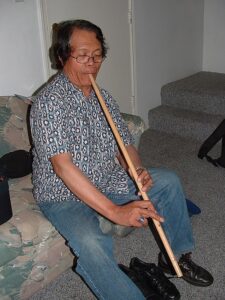
This is a Philippine bamboo flute, the largest type of the Maguindanao, being demonstrated by Master Danongan Kalanduyan, a professor at San Francisco State. © Creative Commons | Author: Philip Dominguez Mercurio PhilipDM
The Palendag is a traditional Filipino wind instrument, which means it produces sound by vibrating air. More specifically, it is a kind of bamboo flute typically played by the indigenous peoples of the Philippines, particularly in the southern regions like Mindanao.
This instrument is often associated with the Maguindanao and Maranao people, two groups native to Mindanao, where it is commonly used in various ceremonial and cultural contexts. The Palendag is crafted from a single piece of bamboo, which gives it a rich, earthy tone. Read more.
Kagul
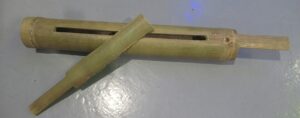
Kagul is bantula or tagungtung in Bukidnon Bantula is the indigenous group idiophone, percussion bamboo musical instrument with a hole 2-inch width and varied length, struck with a 1.5 cm in length and 2 cm width stick using the Bukidnon and Manobo basic rhythm © Creative Commons | Author: Valenzuela400
The kagul is a type of Philippine bamboo scraper gong of the Maguindanaon and Visayans with a jagged edge on one side, played with two beaters, one scraping the jagged edge and the other one making a beat. The Maguindanaon and the Banuwaen use it in the rice paddies to guard against voracious birds, using the sound it produces to scare them away. The Maguindanaon and the Bukidnon also used to use it for simple dance rhythms during social occasions. Read more.
kulintang a tiniok
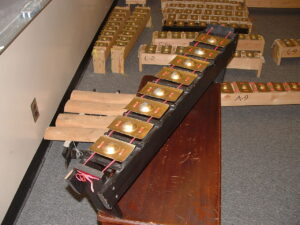
Kulintang a tiniok or Sarunay © Creative Commons | Author: Philip Dominguez Mercurio PhilipDM
The kulintang a tiniok is a type of Philippine metallophone with eight tuned knobbed metal plates strung together via string a top a wooden antangan or rack. Kulintang a tiniok is a Maguindanaon term meaning “kulintang with string,” but they also could call them kulintang a putao, meaning “kulintang of metal.” The Maranao refer to this instrument as a sarunay or salunay, salonay, saronay, saronai or sarunai. Read more.
Deep spiritual connection to nature
The musical instruments of the Philippines offer a captivating glimpse into the country’s rich cultural history. They represent not only the creativity and craftsmanship of Filipino people but also their deep spiritual connection to nature, community, and tradition. From the intricate melodies of the kulintang to the earthy tone of the Palendag, these instruments remain a testament to the enduring power of music as a medium for storytelling, celebration, and unity.
Whether you are a music enthusiast, a cultural explorer, or someone with a love for history, the traditional instruments of the Philippines provide an exciting and enriching way to experience Filipino culture. The music of these instruments continues to echo across the islands, reminding us of the Philippines’ unique and ever-evolving musical identity.










